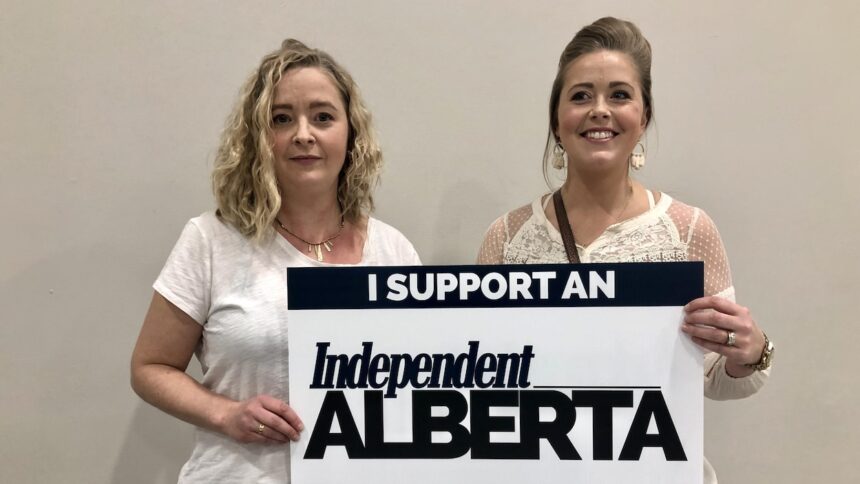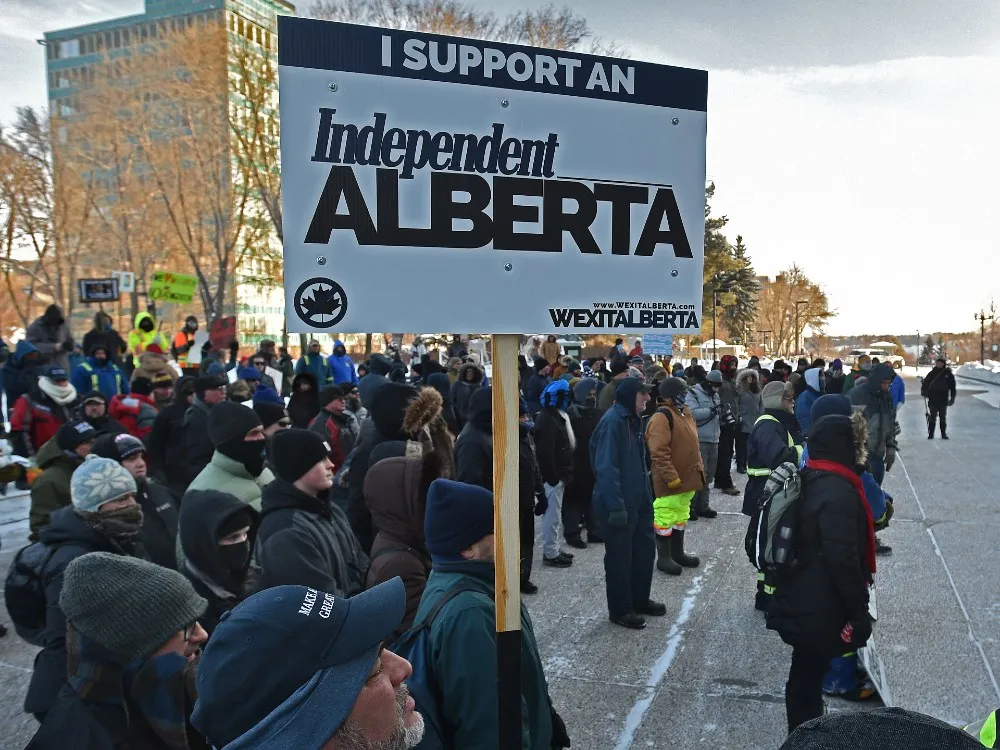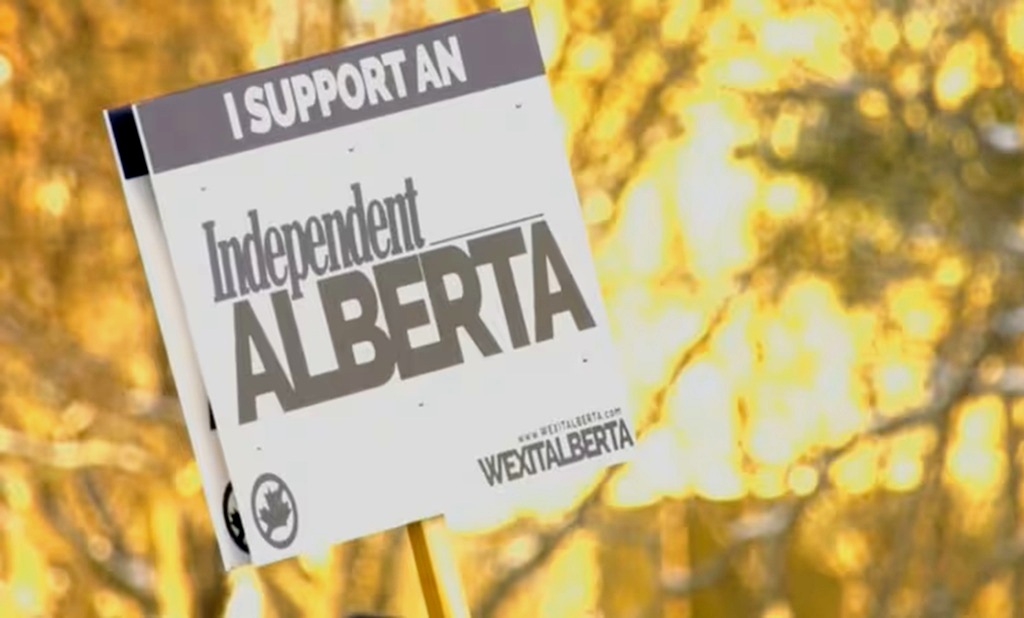EDMONTON – Few topics spark heated debates in Alberta like the question of separation from Canada. Recent federal elections, a surge in political frustration, and sharp words from provincial leaders have kept the idea in the spotlight. Economic grievances, especially around the oil and gas industry, and issues of provincial autonomy fuel ongoing arguments and bold headlines.
While calls for separation grab attention, the path is tangled in history, law, and practical politics. This post tackles whether Alberta could leave Confederation, taking a clear look at what’s driving these debates and what stands in the way. Readers will get a grounded sense of the legal steps, historic precedents, and political realities at play in this conversation.
The Roots of Alberta Separatism
Alberta’s separatist streak runs much deeper than a few angry politicians or headlines. It taps into decades of push and pull between the province’s economic ambitions and the federal government’s plans. From oil booms to busts, and from grassroots campaigns to fierce referendum talk, the story of Alberta separatism is both personal and political. Here’s how the sentiment sprouted and why it won’t go away quietly.
Historical Grievances and Economic Frustrations
Alberta’s tension with Ottawa isn’t new. It goes back to the early 20th century when Alberta started feeling left out of federal decisions that shaped its fortunes.
- Early Days and Social Credit: The Social Credit government of the 1930s reflected Alberta’s desire for more control over its economy. Distrust of outside influence was already taking root.
- Discovery of Oil: When major oil fields were discovered in Leduc in 1947, Alberta’s economy changed overnight. Oil money started flowing, but so did frustration when Ottawa introduced regulations or policies that slowed Alberta’s pace. The province grew tired of sharing the benefits of its resources without equal input on national policy (History of the Petroleum Industry in Alberta).
- National Energy Program (NEP): The 1980s remain a sore spot. The federal government rolled out the NEP to manage oil prices and revenues, hitting Alberta hard. Local businesses shut down, unemployment spiked, and “the West wants in” became a rallying cry (History of Alberta’s Independence). Many Albertans saw this as Ottawa overreaching, fuelling long memories and frustration.
- Boom-Bust Cycles: Alberta’s economy has always ridden oil’s highs and lows. When times are tough, blame often shifts to federal policies for blocking pipelines, taxing carbon, or limiting development.
Waves of Political Mobilisation
Separatist ideas come and go, but they’re never far from the surface. Political movements keep the idea alive, especially after moments of conflict with Ottawa.
- Rising Independence Parties: The late 1970s and early 1980s saw the rise of parties dedicated to western independence. After the NEP, groups like the Western Canada Concept gained real traction, winning a seat in a provincial byelection and stirring province-wide debate.
- Referendum Buzz: While no official separation vote has taken place, serious discussions about a referendum kept cropping up, especially when the economy suffered or after federal elections, when Alberta felt ignored.
- Modern Movements: More recently, groups like Wexit and the Alberta Independence Party have grown during periods of Ottawa-Alberta conflict, most recently during pipeline disputes and carbon tax fights. Politicians sometimes channel separatist anger even when promising to stay within Canada, showing how this energy shapes mainstream debate (Alberta separatism).
Current Sentiment and Public Opinion
Support for separation changes with the news cycle, leadership in Ottawa, and the economy’s mood. Still, significant numbers of Albertans keep the conversation going.
- Recent Polls: Surveys show support for outright independence usually sits between 20% and 35%, peaking after national decisions many see as anti-oil or out of step with Alberta values (Western separation is unlikely, Alberta political scientist says).
- Who Supports Separation: Rural areas and smaller cities often show higher support compared to Calgary or Edmonton. Younger voters and recent immigrants are less likely to support leaving Canada.
- What Drives Support: Common reasons include a sense that Ottawa doesn’t listen, anger over energy policy, and memories of economic pain blamed on federal rules. But when Ottawa and Alberta are less at odds, or oil prices recover, support for separation often cools.
The roots of Alberta separatism are tangled in history and shaped by real experiences, not just political posturing. These roots explain why the conversation keeps coming back whenever Alberta feels pinched or left out of the national conversation.
The Legal and Constitutional Barriers to Secession
Even as Alberta separatism captures headlines, the road to independence faces steep legal walls. The Supreme Court, Parliament, and outside countries all have a say—each one layers in extra complexity. Before any talk of flags or borders, Alberta’s government would hit a wall of constitutional laws and procedures that can’t be skipped. Here’s a simple breakdown of how these barriers work.
Supreme Court Guidance and the Clarity Act
Alberta can’t just pass a law and walk away from Canada. In 1998, the Supreme Court made that clear with the Quebec Secession Reference. The Court said a province does not have the right under the Canadian Constitution to leave on its own. Unilateral secession simply isn’t allowed (Reference re Secession of Quebec – SCC Cases).
The Clarity Act is Parliament’s way of putting those Supreme Court rules into law. Here’s what it requires:
- A Clear Question: Any separation referendum needs a clear, direct question, not just “should Alberta have more autonomy?” but specifically about independence (Clarity Act).
- A Clear Majority: If a vote happens, it must be a clear “yes” by a solid majority. The Act doesn’t set this number in stone; it’s up to the House of Commons to decide if the result is “clear enough.”
- Federal Oversight: After the vote, the House reviews both the question and the results. If they find the question was not clear, or the support was too slim, negotiations don’t happen (An Act to give effect to the requirement for clarity as set out …).
If Alberta wanted out, it could only start a negotiation—never force its exit.
The Multi-Stage Path to Negotiation
Even after a successful referendum, Alberta can’t rush through a back door. Every exit step involves key hurdles and approvals.
Here’s what the process would look like, stage by stage:
- Referendum by Alberta’s Government: The provincial government must first hold a clear independence referendum.
- Review by House of Commons: After the referendum, the House of Commons judges whether both the question and the result meet federal standards under the Clarity Act.
- Whether: Only if the House of Commons approves does Ottawa enter talks on separation. These aren’t just about a clean break—they’d touch on things like the division of assets, debts, and pensions.
- Constitutional Amendments: Any final deal must change the Canadian Constitution. This needs approval not just from Alberta, but also:
- The House of Commons
- The Senate
- At least two-thirds of the provinces (representing at least 50% of Canada’s population)
This lockstep process builds in several points where the plan could stall, or fail outright (An Act to give effect to the requirement for clarity as set out …). Alberta would need broad support from across Canada, not just a local vote.
The Role of International Law and Recognition
Even if Alberta cleared every legal hurdle at home, one big question remains: would other countries recognise it as independent? International law doesn’t guarantee automatic recognition.
What does history show?
- Recognition usually depends on clear respect for legal steps, strong support for independence, and friendly negotiations.
- International bodies look carefully at how fairly a referendum was run and how well minority rights are protected.
- Many past attempts by regions to declare independence have been ignored or rejected if the process wasn’t deemed legitimate (Secessionist movements of Canada).
For Alberta, this means even a strong “yes” at home is not enough. Unless the separation process followed legal steps and Ottawa agreed, Alberta would face years of legal and diplomatic uncertainty.
Key Takeaway: Independence isn’t just a vote away. The Supreme Court, the federal government, and even other countries hold the real levers. Skipping steps or trying to force the issue brings everything to a halt, not a new country.
What Would Happen If Alberta Attempted to Leave?
If Alberta set the wheels in motion to leave Confederation, Canada would face a period of deep uncertainty and high-stakes negotiation. The discussions wouldn’t be simple or short—they’d be layered, contentious, and involve far more than Alberta and Ottawa. Every major institution, from courts to Indigenous communities to businesses, would be swept into the challenge. Expectations would clash with realities, and the whole country would feel the impact far beyond legal documents and political speeches.
Negotiating the Terms of Separation
If Alberta formally started separation talks, both provincial and federal leaders would need to sit down and sort through a list of tough questions. The negotiation would span far beyond simply drawing a new border on a map.
Division of Assets and Debts:
Canada and Alberta would need to split everything from infrastructure to national debt.
- Who gets the pipelines, government buildings, and parks?
- How much of Canada’s national debt would Alberta agree to take on?
Splitting assets is partly math and partly politics. The two sides would fight over how to value each piece and what’s fair versus what feels like punishment or reward.
Energy Agreements:
Alberta’s economy is deeply tied to oil and gas. Any split would disrupt long-standing energy deals within Canada and with other countries.
- There’s no guarantee that provinces like British Columbia or Saskatchewan would support Alberta oil moving through their land.
- International oil buyers would wait for clarity before continuing or investing in new contracts.
Indigenous Treaty Rights:
Alberta’s land is covered by treaties. Indigenous governments and communities have constitutional rights recognized by Ottawa and Alberta.
- These communities would insist on a seat at the table (In Canada’s Alberta, national unity is on the ballot).
- They could challenge the entire process through Canadian or international courts if their rights were not fully respected.
- Indigenous nations might also ask Ottawa to keep their treaty arrangements with Canada, not Alberta.
Trade Issues:
Alberta’s economy depends on trade across provincial and international borders.
- A new Alberta would need fresh agreements with the rest of Canada.
- If negotiations stalled, trade barriers could spring up overnight, hitting everything from food to manufactured goods.
Negotiations would be slow and tense. Distrust on either side could see discussions break down or stall for months, even years.
Potential Challenges and Deadlocks
The path to Alberta’s separation would be lined with roadblocks—many of them placed there by governments, courts, or ordinary Canadians worried about the ripple effects.
Federal Resistance:
Ottawa would almost certainly fight to keep Canada together. Federal leaders would use every legal and political tool at their disposal.
- Parliament could refuse to approve the referendum question or the results.
- National leaders might frame Alberta’s push as a threat to the entire country, stirring up national unity campaigns.
Court Challenges:
Court battles would erupt almost immediately. Questions like whether the process is constitutional, if Indigenous rights are protected, and how assets are split would flood the courts.
- Some legal experts expect the fight would end up at the Supreme Court, dragging out for years (The quiet threat to Canadian unity isn’t Quebec — it’s Alberta).
- During these legal battles, day-to-day business and public services could slow down, as officials wait for clarification.
Public Opinion (Inside and Outside Alberta):
Attitudes across Alberta would shift as the real details of separation debates come out. Some people who supported the idea at first might back away once they see possible costs, like trade friction or international uncertainty.
- In the rest of Canada, people might resent Alberta’s move, opposing any “sweetheart” deals or even supporting tough terms to discourage other provinces from thinking about secession.
- Media coverage would add fuel, sometimes spreading confusion or stoking anger.
Negotiations could deadlock quickly. Federal or Indigenous walkouts, lawsuits, or public protests could stall talks, leaving major questions unanswered for years.
Regional, National and Global Repercussions
Alberta’s attempted exit wouldn’t just turn its world upside down. It would affect families, businesses, and governments across the country—and far beyond.
Western Canada’s Future:
Neighbours like Saskatchewan and British Columbia would face tough choices. Would they support Alberta, try to profit from its challenges, or stay neutral?
- Some might even see their separatists start rumbling.
- Economic ties, energy partnerships, and even personal relationships across Western Canada would become fragile.
Impact on Indigenous Communities:
Indigenous nations straddling Alberta’s borders or relying on federal programs would be thrown into legal and political limbo.
- Many could ask Ottawa to maintain their current treaty relationships outside Alberta’s control.
- Legal uncertainty could stall land claims, natural resource projects, and community planning.
National Unity:
Canada’s unity would take a direct hit. National pride and the sense of a shared story might suffer lasting harm.
- Other provinces, especially Quebec, might revisit old questions about their place in Confederation (Some Albertans say they’re serious about separation after …).
- The debate could divide families, workplaces, and political parties for a generation.
Canada’s International Standing:
To other countries, Canada might look less stable and more uncertain as a place to do business.
- Trading partners would pause big decisions until it was clear who controlled Alberta’s resources and trade rules.
- International investors and companies could pull back, hurting both Alberta and the rest of Canada.
In short, an Alberta independence push would send shockwaves across all levels of society—from family dinner tables and band offices to Parliament and foreign boardrooms. No one would walk away untouched or unchanged.
Alberta’s drive for separation has deep roots in economic frustration and a sense of being sidelined in Ottawa. These feelings won’t disappear soon, especially as federal policies clash with local values and industries. Still, the rules of Confederation make it nearly impossible for Alberta to just walk away. The Supreme Court, Parliament, and Indigenous rights all form rigid barriers. Even a huge surge of local support wouldn’t get around the need for national negotiations and constitutional approval.
The push for more say over resources and policies will keep shaping Canada’s politics, even if outright independence stays out of reach. The debate highlights how important it is for provinces and Ottawa to listen to each other and work together—even when tempers flare.
Related News:
Alberta’s Separatist Wave Grows After Liberal Win in 2025











